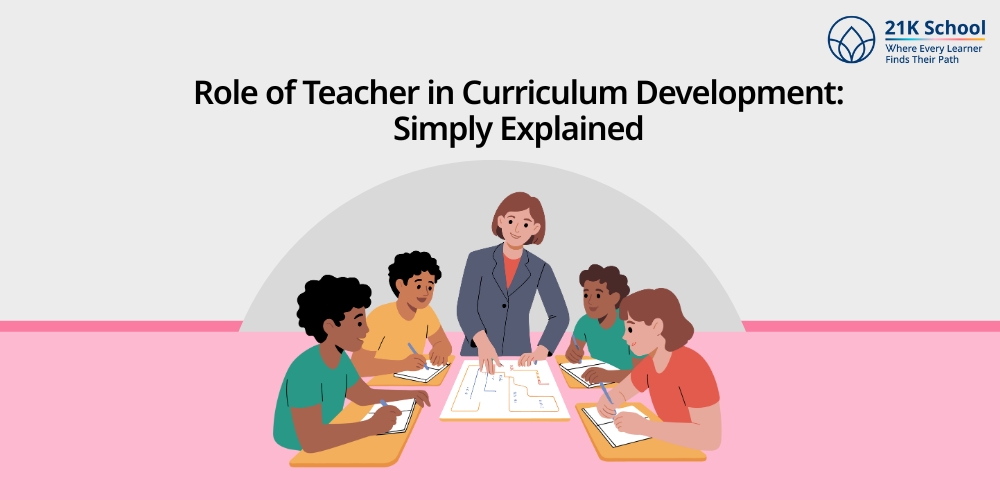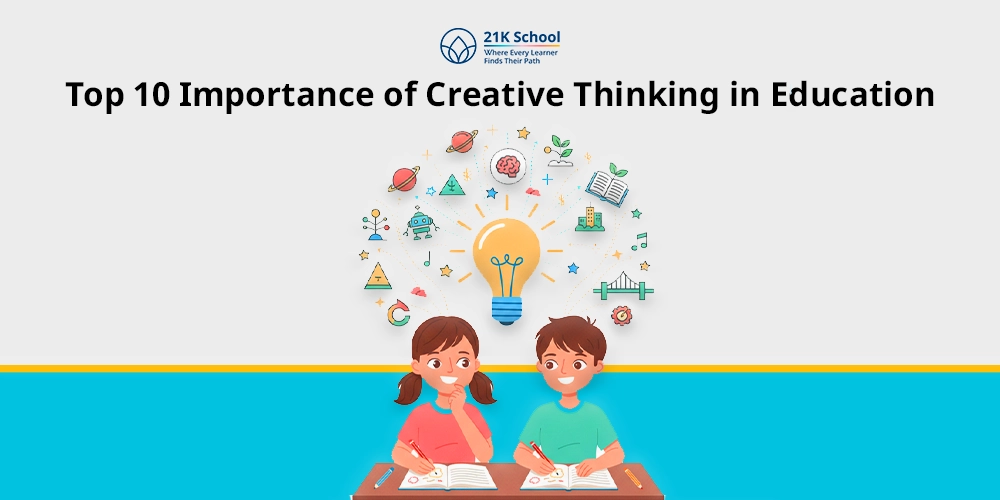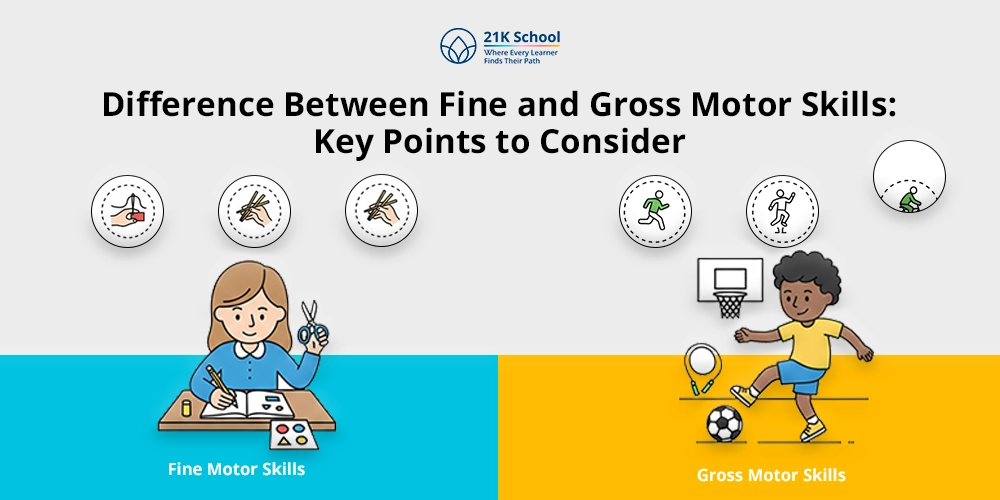
Teachers are now playing a very crucial role in designing the curriculum & the education system. A properly maintained curriculum is not just a piece of paper; it is a framework of teaching, thoughts, & lessons to be learnt by the students, to achieve success in their lives.
In every school, institution, and college, the educational members, authorities must be preparing a well-organized curriculum that is followed by the teacher only.
The real-life classroom experiences & performances are helping teachers to contribute to creating, implementing, & assisting a structured curriculum that must be meeting the students’ needs.
Table of Contents
- What is Curriculum Development?
- 8 Roles of Teachers in Curriculum Development
- 1. Offering Practical Insights to Curriculum Development
- 2. Selecting the Right Curriculum
- 3. Customizing the Curriculum
- 4. Designing Engaging Learning Experiences
- 5. Developing Detailed Lesson Plans
- 6. Evaluating Curriculum Effectiveness
- 7. Aligning with Educational Standards
- 8. Ensuring Learner Engagement
- Conclusion
What is Curriculum Development?
Curriculum development refers to a step-by-step process which includes planning, arranging, developing, executing, & examining the syllabus.
It is mostly done because after the curriculum is made, the students are expected to complete that lesson or course within that particular time period.
It includes finalizing the content, designing educational activities, creating strategies, plans & mostly choosing how the students are going to be handled or taught.
An effective curriculum allows students to learn in an aligned way where the learning remains connected with both the academic & real-life expectations.
So basically, teachers are the lead of this method.
Here, not only do they just stick to the curriculum, & help them in creating it.
Today’s class experience provides critical thinking, how to give feedback, which will help the individual to adjust & can improve themselves with time.
8 Roles of Teachers in Curriculum Development
Teachers are multitaskers; they can play the role of a mentor, educator, or designer.
Curriculum development plays an important role, which is more important than teaching, organizing, examining, personalized learning, and creativity.
Therefore, below are mentioned some of the key roles that teachers usually play in curriculum development:
1. Offering Practical Insights to Curriculum Development
Teachers act as a connector between theoretical & practical knowledge.
Whereas curriculum designers plan a roadmap based on analysis, teachers come up with a real-life classroom impression.
Teachers can grasp which teaching methods the students will respond to, where they are weak, & what exactly keeps them fully engaged.
Teachers need to finalize the curriculum is student-centric, original, & is achievable by sharing their viewpoints & feedback.
2. Selecting the Right Curriculum
Teachers always help in choosing the best fit instructed curriculum material for their students’ requirements.
It generally consists of Learning materials, books, digital learning methods & tools.
Their preferences are supported by:
- Age suitability
- Various Learning Styles
- Cultural responsiveness
In a Plurilingual classroom, teachers take stand for language development for all the students by selecting material best suited for them. This assures that the students are usually having the access to all the educational resources & effectively.
Explore the best way to choose the right curriculum for your child.
3. Customizing the Curriculum
A single curriculum never fits for all the students.
Teachers continuously change the structure of the lesson in order to meet the needs of all the students, their requirements, & various learning methods.
So basically, teachers are making learning flexible, easy & meaningful for the students with all their efforts.
4. Designing Engaging Learning Experiences
Teachers are the designers for an experienced classroom.
After the curriculum is prepared, teachers try to picturize it in a way of learning activities by bringing it into life.
They usually can plan:
- Teamwork & Group Discussions
- Interactive Learning activities in class
- Real-life experience through the lessons
By making or adding these activities, teachers are making it easy, effective & interactive for the students to learn in such an environment.
5. Developing Detailed Lesson Plans
A structured curriculum shows the proper intent of teaching, like planning lessons in order to convert it into real-life lessons.
Teachers are the designers who are responsible for preparing the CURRIULUM, the facts that are included in this are:
- Teaching Methods
- Questionnaire Rounds
- Essential study materials
- Achievable targets or goals while learning
These facts actually help in maintaining a well organised flow of learning which allows students to use their creative ideas, knowledge into fruitful discussions.
6. Evaluating Curriculum Effectiveness
The main duty of teachers is to check if the curriculum is suitable for the classroom properly or not.
In a class of 50 students teachers also face difficulty in getting an idea about what is the effective learning method, or how to make the students understand the concept.
But if the students share their feedback, proper assessments are organised then it will be quite easy for them to identify the areas of improvement.
By the help of this continuous examination, it updates & improves the curriculum in order to make it effective & achievable.
7. Aligning with Educational Standards
Teachers always make sure that their strategies or plans are aligned with the state & national standards. It further focuses on what the students are required to achieve at each level of learning.
By analysing the standards in context of their classrooms, teachers plan a strategy for proper balance in the academic & curriculum of the school.
8. Ensuring Learner Engagement
A proper organised curriculum, helps the students to get engaged in the learning process efficiently.
Teachers apply various teaching styles such as creative ideas, a wide range of technological tools, & real -life experiments in order to keep the students confident & engaged .
For improving engagement in learning they can implement:
- Gamified topics or lessons
- Team-based learning or task
- Practical based experiments
By creating this kind of environment students will definitely engage themselves in learning. It will improve their critical thinking skills & interaction among their peer members.
By this technique the learning can be more fun & engaging for the students.
Conclusion
Teachers are the real heroes of curriculum development. They just not only design the curriculum, rather they always try to improve, add & examine all the strategies they have made in order to make learning more effective & meaningful.
Their participation assures that the curriculum is subject-centric, responsive to the students.
From aligning the classroom learning into national curriculum standards, teachers help students to build their career in a better way & prepares them for the future.


